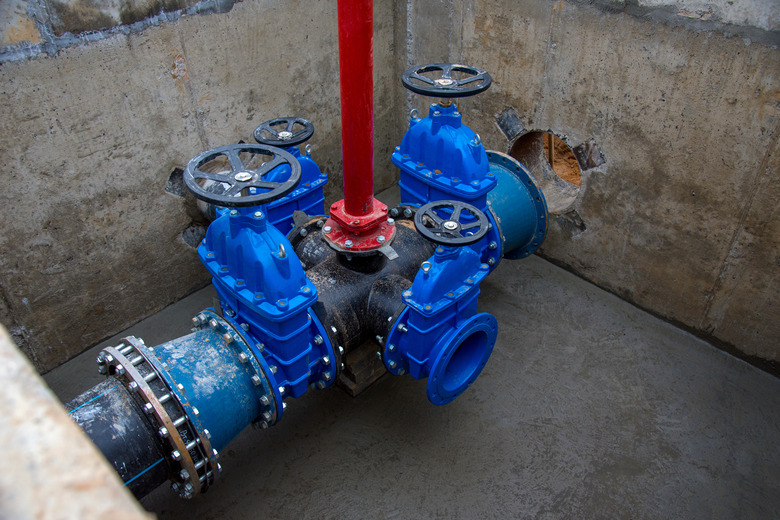What Sediments Make A Good Aquifer?
The sediments that make up aquifers must be permeable and porous, allowing water to move through them. Water from an aquifer is generally extremely clean, as the fine sediments trap particles and bacteria, acting as a natural filter. The sediments that tend to make the best aquifers include sandstone, limestone, gravel and, in some cases, fractured volcanic rock.
Sandstone
Sandstone
Although sand is very porous, once it is compacted and cemented into rock it loses much of its pore space. Nonetheless, groundwater can still be transmitted through it joints and fractures. Sandstone can be very large since beds of sandstone can spread over extended areas. Many of the sandstone aquifers in the United States are embedded in shale and siltstone. As a result, the water in these aquifers are considered to be in confined condition because the surrounding rock is impermeable.
Limestone
Limestone
Limestone is the most common type of carbonate-rock aquifer. Many of them begin as deposits in former marine environments, where the sediments lithify and compact. The cracks and joints in limestone are generally made as the rock slowly dissolves in slightly acidic water, leaving places for groundwater to flow. Sometimes caverns are formed that hold water and extend for thousands of feet. Often, the crevices and joints in limestone form a connecting network, further enhancing water flow.
Gravel
Gravel
Gravel makes a good aquifer because it is extremely permeable and porous. The large pieces of sediment create significant pore spaces that water can travel through. Often, gravel must be surrounded by a less permeable soil type, such as rich clay or impenetrable rock. When gravel cements, however, it becomes conglomerated and loses its permeability.
Fractured Volcanic Rocks
Fractured Volcanic Rocks
In some cases, fractured volcanic rocks, such as columnar basalts, make good aquifers. Rubble zones surround volcanoes and consist of large particles, which, like gravel, are very porous and permeable. The variation among volcanic rock sediments largely result from the specific type of sediment, and the way it was ejected. Pyroclastic rocks have high permeability and large pores. Basaltic flows are usually fluid and have large pore spaces that allow water to pass through.
Cite This Article
MLA
Yuetter, Clayton. "What Sediments Make A Good Aquifer?" sciencing.com, https://www.sciencing.com/sediments-make-good-aquifer-8469747/. 22 May 2011.
APA
Yuetter, Clayton. (2011, May 22). What Sediments Make A Good Aquifer?. sciencing.com. Retrieved from https://www.sciencing.com/sediments-make-good-aquifer-8469747/
Chicago
Yuetter, Clayton. What Sediments Make A Good Aquifer? last modified March 24, 2022. https://www.sciencing.com/sediments-make-good-aquifer-8469747/
